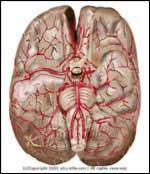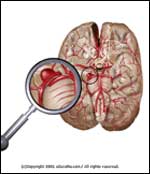 |
| Brain aneurysm |
 |
|
 |
|
 |
- Lumbar puncture (spinal tap)-cerebrospinal fluid will show blood if there is aneurysm rupture.
|
 |
|
 |
|
 |
- As stated above, a Subarachnoid Hemorrhage is bleeding into a space in the brain, generally causing significant and dangerous symptoms (see Subarachnoid Hemorrhage). A ruptured Cerebral Aneurysm is just one cause of Subarachnoid Hemorrhage. |






No comments:
Post a Comment